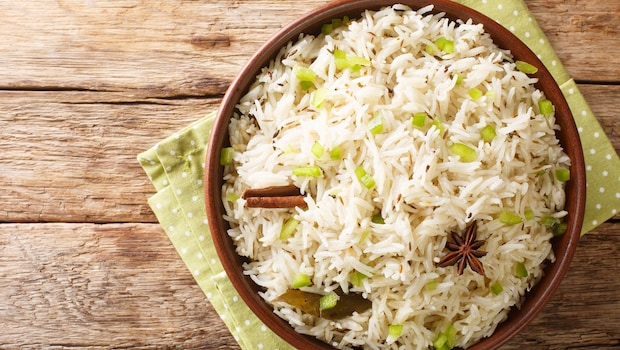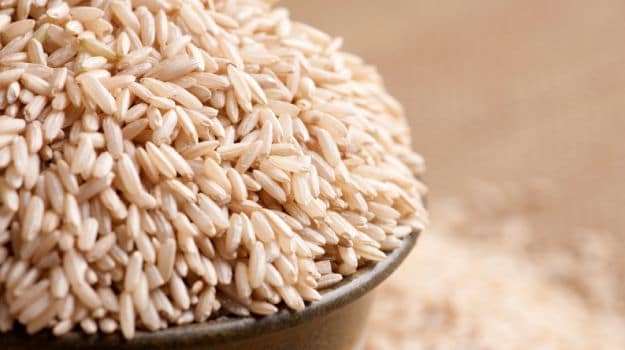Rice is a staple in Indian diets, often the star of our thalis and comfort meals. But when it comes to weight loss, rice has always been a debated grain. While white rice is loved for its soft texture and quick cooking, it is also blamed for empty calories and weight gain. On the other hand, brown rice is often hailed as the healthier option, thanks to its fibre and nutrient content. So, if you are trying to shed extra kilos, which one deserves a place on your plate? Here is a simple breakdown of their nutritional differences, digestion benefits, and weight-loss impact.
Also Read: 10 Mistakes To Avoid When You Are On Weight Loss Diet
Quick Nutritional Comparison: White Rice Vs Brown Rice
| Nutrient | White Rice | Brown Rice |
| Calories (per cup) | 200 | 215 |
| Carbohydrates | High (refined) | High (whole grain) |
| Fibre | Low | High |
| Protein | Moderate | Moderate |
| Glycaemic Index | Higher | Lower |
| Key Nutrients | Iron (enriched), easy to digest | Fibre, magnesium, B vitamins |
Carbs Vs Fibre: What Matters More For Weight Loss?

Photo: Pexels
Carbohydrates are the body's primary energy source, but the type of carbs you eat matters. Refined carbs, such as those in white rice, can cause quick sugar spikes and crashes, leading to hunger soon after eating. Fibre slows digestion, promotes fullness, and reduces calorie intake throughout the day. Choosing the right carbs and balancing them with fibre-rich foods helps make weight loss more sustainable.
Does White Rice Really Lead To Weight Gain?

White rice is often criticised in weight-loss diets, but it does not deserve all the blame. According to nutritionist Nidhi Kakar, rice does not actually make you gain weight. Nutritionist Shweta J Panchal adds that white rice is easy to digest, gentle on the stomach, and provides quick energy without straining the digestive system.
White rice can easily be part of a balanced meal when paired with dal, sabzi, or lean protein. The problem arises when it is eaten in large portions with fried or oily curries, which can quickly add calories. Its low fibre content is also why you feel hungry soon after eating.
Brown Rice Benefits For Weight Loss

A 2013 study highlighted that brown rice supports weight loss because it is rich in fibre and has a lower glycaemic index than white rice. This helps stabilise blood sugar and reduces the likelihood of fat storage around the belly.
Nutritionist Panchal recommends brown rice for those wanting to increase dietary fibre or manage weight. It keeps you full for longer, improves digestion, and helps regulate blood sugar levels. However, brown rice is chewier and takes longer to cook, which may not appeal to everyone.
What To Choose: White Rice vs Brown Rice?
White rice: Best for people with digestive issues, children, or athletes needing quick energy and easy-to-digest meals.
Brown rice: Suitable for individuals aiming for weight loss, better blood sugar management, and higher fibre intake.
This personalised approach helps you select the right option depending on health goals and lifestyle.
White Rice Or Brown Rice: Which Is Better For Weight Loss?

If your goal is weight loss, brown rice has the advantage because of its fibre, satiety, and lower glycaemic index. However, white rice is not the villain it is often made out to be. When eaten in moderation and paired with nutrient-dense sides, it can still fit into a healthy diet. Instead of completely cutting out white rice, consider alternating with brown rice based on taste, convenience, and digestive comfort. That balance makes weight loss more realistic and sustainable.
Best Ways To Include Rice In A Weight-Loss Diet
Practice portion control – stick to one medium bowl of rice per meal.
Pair with protein – combine rice with dal, paneer, fish, or chicken for better satiety.
Add vegetables – mixing rice with vegetables boosts fibre intake and volume.
Avoid fried pairings – skip heavy gravies, papads, and fried sides that add calories.
Experiment with cooking – steamed or pressure-cooked rice is lighter than ghee-laden pulaos.
Also Read: Weight Loss Diet: This Herbal Turmeric Tea May Help Lose Extra Kilos
Common Mistakes To Avoid With Rice:

Overeating rice portions without balancing with vegetables or protein.
Pairing rice with deep-fried curries or oily gravies.
Skipping brown rice completely due to taste or texture instead of finding a balance.
These mistakes can undermine weight-loss goals, regardless of rice type.
What Is The Best Time To Eat Rice For Weight Loss?

The afternoon (lunch time) is considered the best time to consume rice because metabolism is at its peak, allowing the body to burn off carbs more efficiently. Avoid eating rice close to bedtime, as your body may not have enough time to use the energy, which could lead to fat storage. More importantly, portion control is key. Whether white or brown, pairing rice with dal, vegetables, or protein slows digestion and keeps it weight-loss friendly.
The Bottom Line:
Both white rice and brown rice can have a place in a healthy diet. Brown rice is better suited for weight loss due to its fibre and lower glycaemic index, but white rice is easier to digest and energy-rich. The key is moderation, portion control, and pairing rice with balanced sides. Choosing based on your personal health goals and lifestyle makes weight loss both practical and achievable.
Disclaimer: This content including advice provides generic information only. It is in no way a substitute for qualified medical opinion. Always consult a specialist or your doctor for more information. NDTV does not claim responsibility for this information.
About Nikita NikhilMeet Nikita, a passionate soul with an insatiable love for two things in life: Bollywood and food! When she's not indulging in binge-watching sessions, Nikita can be found behind the lens capturing moments or expressing her creativity through painting.





